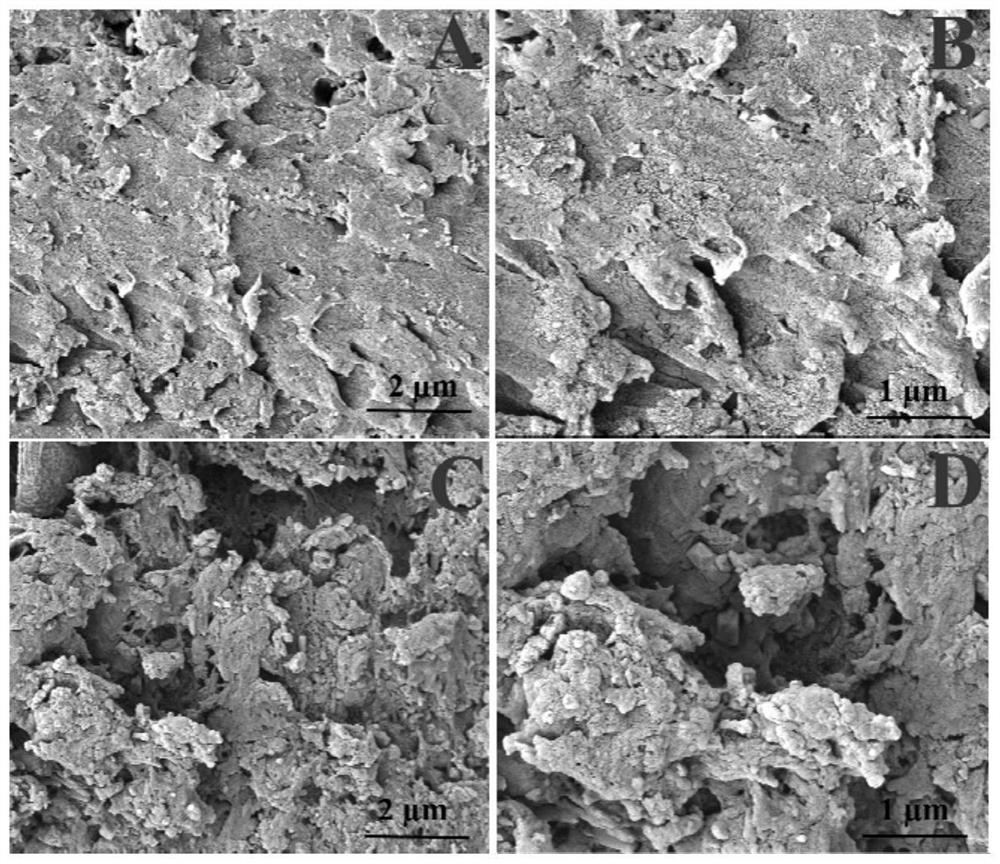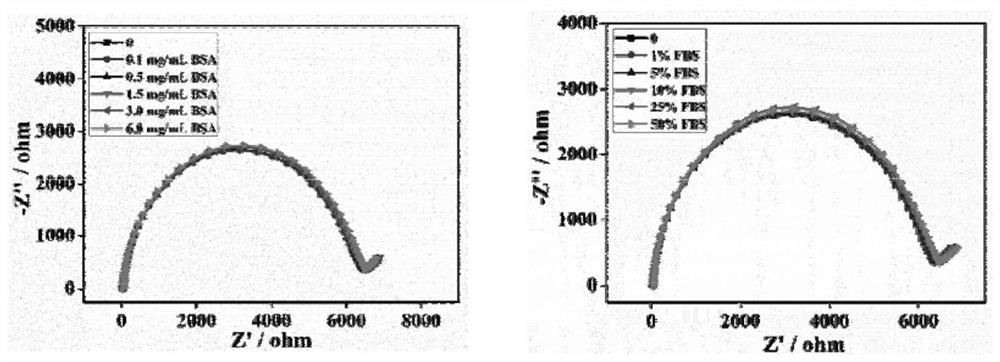Preparation method of anti-pollution electrochemical biosensor based on temperature-sensitive western blot gel
A technology of western imprinting and biosensors, applied in the direction of material electrochemical variables, scientific instruments, instruments, etc., can solve the problems of accelerating the process of electrochemical biosensors, poor selectivity, low sensitivity, etc., achieve excellent anti-pollution performance, easy operation, The effect of high detection sensitivity
- Summary
- Abstract
- Description
- Claims
- Application Information
AI Technical Summary
Benefits of technology
Problems solved by technology
Method used
Image
Examples
Embodiment 1
[0031] 1) Electrode pretreatment: Glassy carbon electrode GCE was polished in 1.0, 0.3, 0.05 µm alumina suspension, ultrasonicated, and washed with ethanol and water for 3 minutes.
[0032] 2) Preparation of polymerization solution: weigh 5.0 mg acrylamide, 5.0 mg N,N - Methylenebisacrylamide, 5.0 mg ammonium persulfate, 300.0 mg isopropylacrylamide, 5.0 mg transferrin, and 5.0 µL tetramethylethylenediamine were uniformly dispersed in 1.0 mL phosphate buffer solution.
[0033] 3) Construction of the sensor: Take 7-10 µL of the prepared mixed solution and drop it on the surface of the pretreated GCE, and perform free radical polymerization reaction for 30 min under nitrogen atmosphere. Water rinses the electrode surface to remove unreacted liquid.
[0034] 4) Dissociation and recombination of template molecules: Due to the existence of thermosensitive polymers, template protein molecules can be completely dissociated by electrochemical methods at 37°C. At 20°C, the template ...
Embodiment 2
[0036] 1) Electrode pretreatment: Glassy carbon electrode GCE was polished in 1.0, 0.3, 0.05 µm alumina suspension, ultrasonicated, and washed with ethanol and water for 3 minutes.
[0037] 2) Preparation of polymerization solution: weigh 5.0 mg acrylamide, 5.0 mg N,N-methylenebisacrylamide, 5.0 mg ammonium persulfate, 300.0 mg isopropylacrylamide, 5.0 mg human immunoglobulin G and 5.0 µL tetramethylethylenediamine, uniformly dispersed in 1.0 mL phosphate buffer solution.
[0038] 3) Construction of the sensor: Take 7-10 µL of the prepared mixed solution and drop it on the surface of the pretreated GCE, and perform free radical polymerization reaction for 30 min under nitrogen atmosphere. Water rinses the electrode surface to remove unreacted liquid.
[0039] Effect verification:
[0040] (1) Dissociation and recombination of template molecules: Due to the presence of thermosensitive polymers, template protein molecules can be completely dissociated by electrochemical method...
PUM
 Login to View More
Login to View More Abstract
Description
Claims
Application Information
 Login to View More
Login to View More - R&D Engineer
- R&D Manager
- IP Professional
- Industry Leading Data Capabilities
- Powerful AI technology
- Patent DNA Extraction
Browse by: Latest US Patents, China's latest patents, Technical Efficacy Thesaurus, Application Domain, Technology Topic, Popular Technical Reports.
© 2024 PatSnap. All rights reserved.Legal|Privacy policy|Modern Slavery Act Transparency Statement|Sitemap|About US| Contact US: help@patsnap.com










